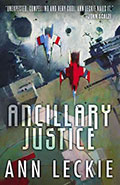I, Robot
By Isaac Asimov

- I, Robot
-
Author: Isaac Asimov
- Series: Robot Series
-
Publisher: The Folio Society
- ISBN: 9780586025321
- Published: October 2016
- Pages: 256
- Format reviewed: Paperback
- Review date: 21/10/2016
- Language: English
- I, Robot
- Robots and Empire
- The Bicentennial Man
- The Caves of Steel
- The Naked Sun
- The Robots of Dawn
I, Robot is a collection of nine short stories by Isaac Asimov, which originally appeared in Super Science Stories and Astounding Science Fiction between 1940 and 1950. The fictional character Dr Susan Calvin (robopsychologist for U.S. Robots and Mechanical Men Inc) relating these stories to a reporter in the 21st Century acts as a framing narrative, tying them together to create one of the finest examples of a “fix-up” novel.
Each story shares the common theme of Interaction between humans and robots and the often misplaced unease that followings a growing, artificial, intelligence (a term known as the Frankenstein complex). When read from beginning to end I, Robot can also be seen as an evolution of Asimov's Robots. It is also considered to be the first volume in Asimov's Robots Series.
You might be asking yourself, why is SFBook reviewing a book that is over 60 years old and already read and loved by many a science fiction fan? Because it's only gone and been printed by The Folio Society!
For those who don't know, The Folio Society was created back in 1947 with the belief that great books deserve to be presented in a form worthy of their contents. For almost 70 years they have been carefully crafting exquisite, often illustrated, hardback editions of some of the worlds finest literature. Some (as with I, Robot) even come with their own slipcase. The thing with Folio editions is that it's not just a nice hardback with a different cover. Each book is considered unique in which typography, illustration, paper, printing and binding technique are all carefully chosen. You can see the care and attention to detail that they lavish with each book, they really are something special.
The Folio Society edition of I, Robot features original binding design and illustrations by the artist Alex Wells along with an introduction by respected author and robotics engineer Daniel H. Wilson. The illustrations by Wells are simply stunning, each with it's own expressive colour palette. It is a worthy addition to the collection. I, Robot is a wonderful novel full of clever ideas. It solidified Asimov's reputation as a gifted author and is hugely influential within science fiction, the field of robotics and the larger world.

It's probably worth noting that the book is only loosely associated with the film of the same name. The only real input from this book being the Three Laws and a scene that uses the idea of the short story "Little Lost Robot". The film I, Robot is actually based on a script called Hardwired, written by Jeff Vintar.
All nine of the stories within I, Robot share Asimov's Three Laws of Robotics:
1. A robot may not injure a human being or, through inaction, allow a human being to come to harm.
2. A robot must obey the orders given it by human beings except where such orders would conflict with the First Law.
3. A robot must protect its own existence as long as such protection does not conflict with the First or Second Laws.
The first story is also the first time Asimov implied these laws, and also the first time Asimov wrote about robots. Originally published in the September 1940 edition of Super Science Stories under the name "Strange Playfellow" (a name chosen by the editor Frederik Pohl and disliked by Asimov). "Robbie" tells the tale of a mute robot owned by the Weston family and in use as a nursemaid for their daughter Gloria. The story centres on the misplaced technophobia that surrounds robots. "Robbie" also marks the beginning of Asimov's positronic robot series.
"Runaround" (first published in the March 1942 issue of Astounding Science Fiction) is the first story to feature the re-occuring characters Powell and Donovan and is the first time the Three Laws are explicitly mentioned. It's actually set last year (2015) and follows Powell and Donovan's attempts to restart a remote mining station on Mercury that was abandoned ten years previous.
They use an expensive, advanced robot SPD-13 (known as Speedy) to grab some selenium from a nearby pool, a material crucial in the life support of the base and something that without, will result in a very brief and final mission for the pair. Something goes wrong with Speedy however and he fails to return or obey commands. They use the over-riding command of the first of the Three Laws in order to bring the errant robot back.

"Reason" is the third short story of the collection and originally featured in the April 1941 issue of Astounding Science Fiction. Powell and Donovan are called to a space station that supplies energy to planets by the use of microwave beams. The robot co-ordinator, QT1 (known as Cutie) decides that nothing beyond the station actually exists and therefore any humans that visit the station are entirely expendable. He then decides that the power-source of the space station is the "Master" and builds a religion on this basis. It's up to Powell and Donovan to manage the situation as best they can.
"Catch that Rabbit" was first published in the February 1944 issue of Astounding Science Fiction, it's the third time within the collection that we encounter Powell and Donovan. This time they are testing a new model of robot on a mining station located on an asteriod. The new robot controls six smaller robots (known as "fingers") via it's posotronic field. Strangely, when there is no human in contact the robot stops mining (an early example of a Heisenbug) and it's up to Powell and Donovan to figure out what is going on.
"Liar!" is perhaps the weakest of the storys in the collection, although it's still an important piece of science fiction literature. It's also the first time that the term "Robotics" was ever used. This story also marks the first time Asimov introduced us to Susan Calvin as she investigates Robot RB-34 (Known as Herbie) who has become telepathic following a fault in production.

"Little Lost Robot" is my favourite story of the collection, Susan Calvin is asked to find robot NS-2 (known as Nestor) who has taken the order of "get lost" literally. The problem is that Nestor has a slightly different version of the Three Laws - altered to prevent the "rescue" of humans from a type of radiation that they could actually safely stay in for a short time. As such instead of having the full First Law:
1. A robot may not injure a human being or, through inaction, allow a human being to come to harm.
Nestor has the shortened version:
1. A robot may not injure a human being.
Given that people are still afraid of robots, it is seen as vital that Nestor is found before anyone finds out he is different. The good news is that they know what room he is in, the bad news there are 63 identical robots also in that room. If this seems familiar, the film I, Robot did use this story as one of the scenes.
"Escape!" was first published as "Paradoxical Escape" in the August 1945 issue of Astounding Science Fiction an reunites us with Powell and Donovan who board an experimental ship designed to use a working hyperdrive capable of keeping humans aboard alive during the hyperspace jump.
Imagined by the biggest competitor of U.S. Robots and Mechanical Men, Inc , their non-posititronic supercomputer was destroyed in attempts to build the ship.
U.S. Robots and Mechanical Men agree to help and use their own positronic artificial intelligence called "The Brain" (essentially a robot without a working body) who successfully builds the experimental craft. On boarding the ship Powell and Donavan become aware that "The Brain" has become something of a practical joker, the ship having been built with no showers, beds, manual controls and only baked beans and milk for food.
"Evidence" was first published in the September 1946 issue of Astounding Science Fiction. Dr Susan Calvin is asked to help identify if the successful Lawyer and mayoral candidate Stephen Byerley is indeed human and not a life-like robot. Without cutting him open, they are ineviatably left with seeing if Byerley obeys the Three Laws - if he does it still doesn't prove he is a robot but if he doesn't then he has to be human. It's a clever story with hints of Blade Runner about it and is left open to whether Byerley is a Robot or not.
"The Evitable Conflict" follows on some time after the events of "Evidence" and Stephen Byerley has just been re-elected as World Co-ordinator. He is concerned with machine and anti-machine movements and asks Dr Susan Calvin for help. They Conclude that Machines have now generalised the First Law to:
1. No Machine may harm humanity; or, through inaction, allow humanity to come to harm.
Quite a change from the original (a Law that becomes the Zeroth Law in Asimov's novel Robots and Empire) and a reminder of how far Robots have changed since the story of Robbie. It is perhaps the most important story of them all and is quite powerful, envisaging a world that is dominated by those Three Laws and is controlled by machines. It isn't however the jovial, bright future you might expect (even if the machines are doing a better job than us) instead being a sombre and moody piece.
Overall, I, Robot is clever fiction and perhaps only now really beginning to become relevant as progress toward the thinking machine takes huge strides and robotic development hits some big milestones (as I write this I've just read of a robot that sweats). With though-provoking ideas about ethical behaviour, the nature of humanity and how much control an individual really has over their life, it remains an important piece of classic literature.
Written on 21st October 2016 by Ant .











